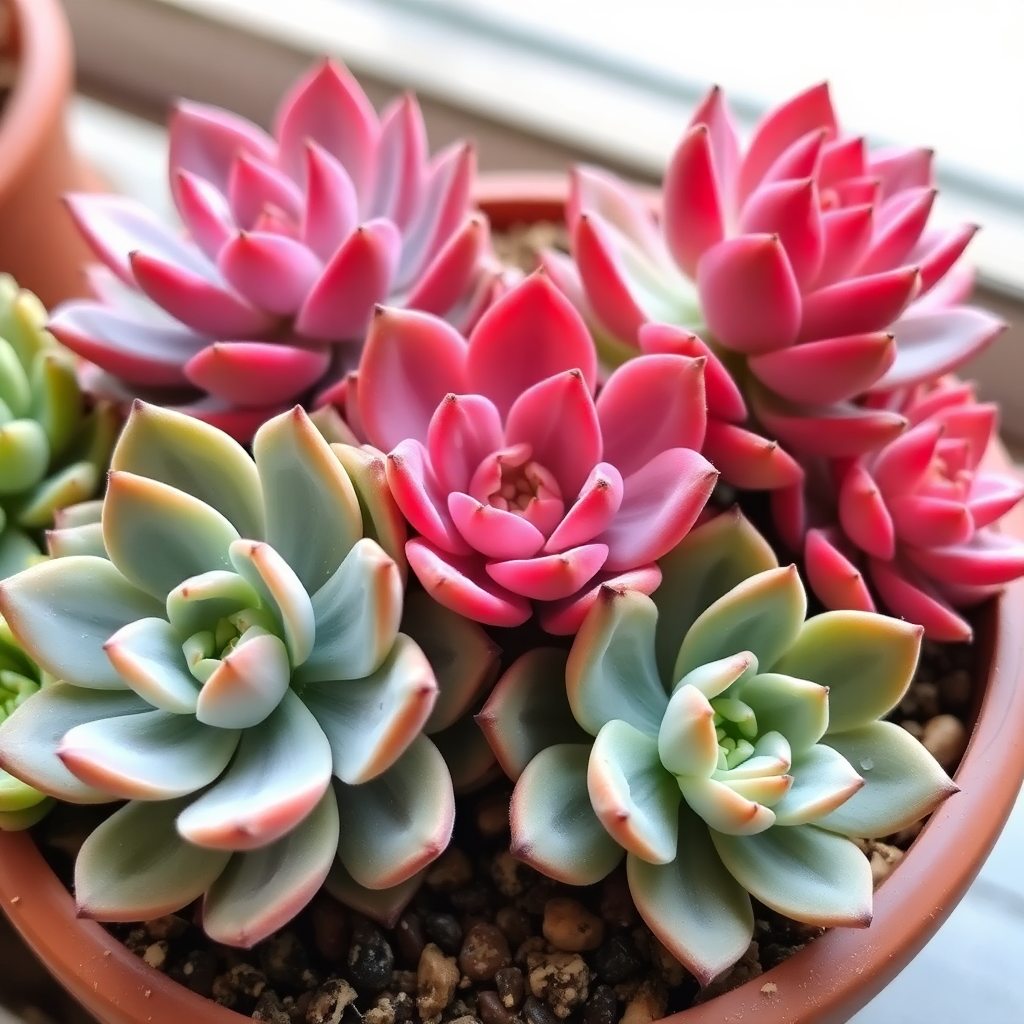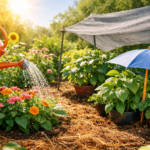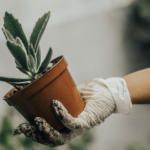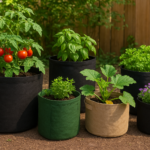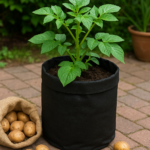Echeveria succulents are more than just a pretty face in houseplants—they’re a testament to nature’s ability to thrive in challenging environments while adding a splash of artistic beauty to our homes and gardens. Whether you’re a seasoned succulent collector or a budding plant enthusiast, this comprehensive guide will walk you through everything you need to know about Echeveria. So, grab your gardening gloves, and let’s dive into the vibrant world of these resilient, eye-catching plants!
What is Echeveria?

At its core, Echeveria is a genus of succulents that belongs to the Crassulaceae family. Recognized for its rosette-shaped arrangement of fleshy leaves, Echeveria offers a spectrum of colors and textures that captivate plant lovers everywhere. These plants have a unique charm that lies in their ability to store water in their leaves, making them a perfect choice for arid climates and those who might forget to water every now and then.
Characteristics and Appearance
Echeveria plants typically feature thick, fleshy leaves that range in hues from soft greens and blues to deep purples and reds. The leaves are often adorned with delicate, powdery coatings that shimmer in the sunlight. With a variety of shapes—from the tight, compact rosettes of Echeveria elegans to the elongated, almost architectural forms of other species—each plant tells its own story. Their visual appeal makes them a favorite for both indoor decor and outdoor landscaping.
History and Origin of Echeveria
Geographic Roots
Native primarily to the highlands of Central America and Mexico, Echeveria has a storied past that dates back centuries. These hardy plants adapted to the rocky, sun-drenched terrains of their native regions, evolving traits that allow them to conserve water and flourish in harsh conditions. This natural resilience is one of the reasons they have gained popularity worldwide.
Historical Significance
Long before Echeveria became a trendy houseplant, indigenous peoples of Mexico appreciated these succulents not only for their beauty but also for their medicinal properties. Today, while we may not use them for traditional remedies, the rich history of Echeveria serves as a reminder of nature’s diverse utility. Their transition from wild, natural landscapes to curated indoor gardens symbolizes the bridging of ancient botanical wisdom with modern aesthetics.
Popular Varieties of Echeveria
Overview of Species
With over 150 recognized species, the world of Echeveria is as diverse as it is beautiful. Some of the most popular varieties include Echeveria elegans (commonly known as the Mexican snowball), Echeveria agavoides (resembling the shape of an agave), and Echeveria runyonii, which features striking color variations. Each species brings its own set of characteristics, making them suitable for different settings and care routines.
Distinguishing Features
What makes Echeveria so enchanting is the subtle variation between species. For instance, while one type may flaunt a powdery blue coating, another might burst with bright pink edges. These differences are not just skin-deep; they often indicate the plant’s adaptation to its natural habitat. Understanding these nuances helps you select the right type of Echeveria for your specific environment and design vision.
Growing Conditions for Echeveria
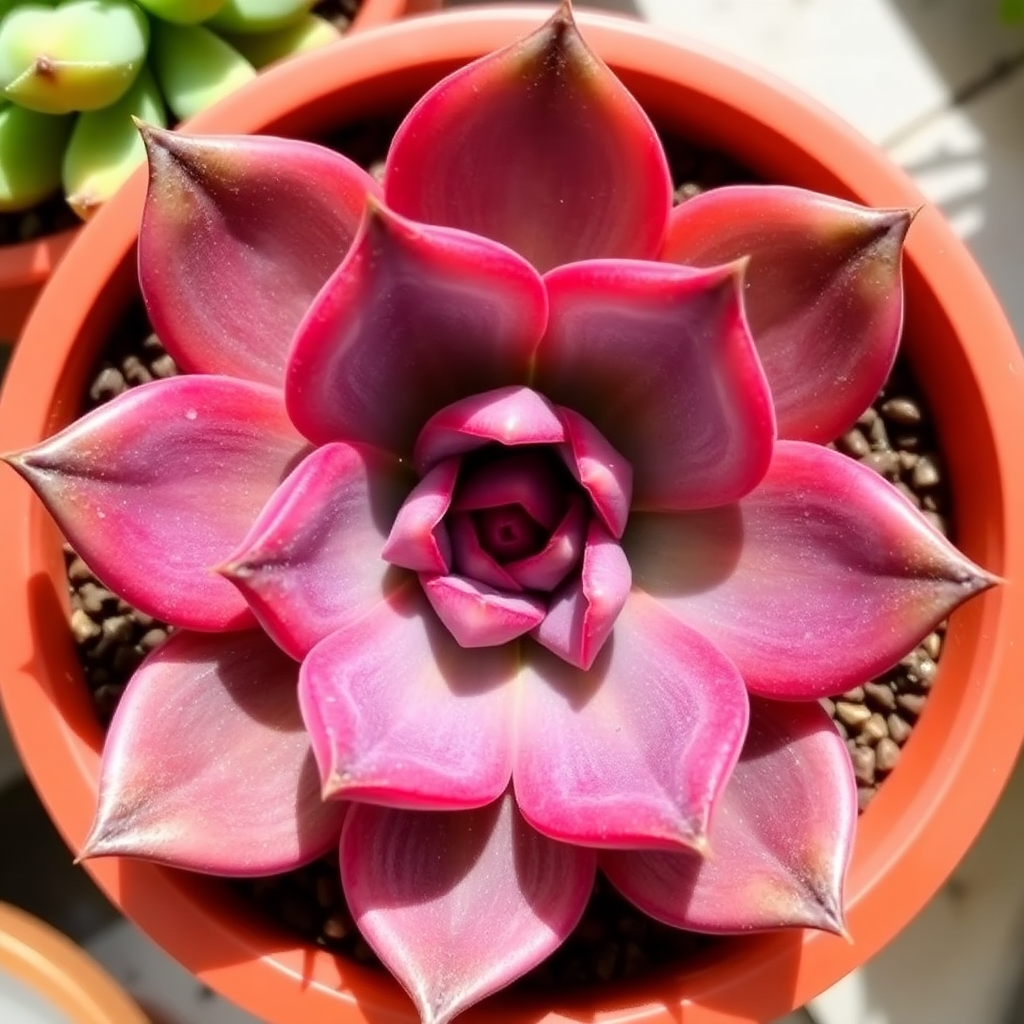
Light Requirements
Echeveria thrives in bright, indirect sunlight. While they love basking in the sun, too much direct exposure—especially during the peak of summer—can lead to sunburned leaves. Think of them as the perfect beach-goers who need just the right amount of sun to enjoy their day without getting scorched!
Watering and Soil
One of the reasons Echeveria is such a hit among busy plant enthusiasts is its low water requirement. Overwatering can be a common pitfall; these succulents prefer a well-draining soil mix, often enhanced with sand or perlite to mimic their natural rocky habitat. When you water, let the soil dry out completely before giving them another drink. It’s a bit like letting your favorite cake cool down before enjoying another slice!
Temperature and Humidity
Coming from warm, arid regions, Echeveria prefers a temperature range that mimics its native environment—think 65°F to 80°F (18°C to 27°C). While they can handle a slight dip in temperature, frost is a big no-no. In humid climates, providing good air circulation is key to prevent fungal diseases. The balance of warmth and low humidity helps these plants maintain their plump, vibrant leaves.
Propagation Techniques for Echeveria
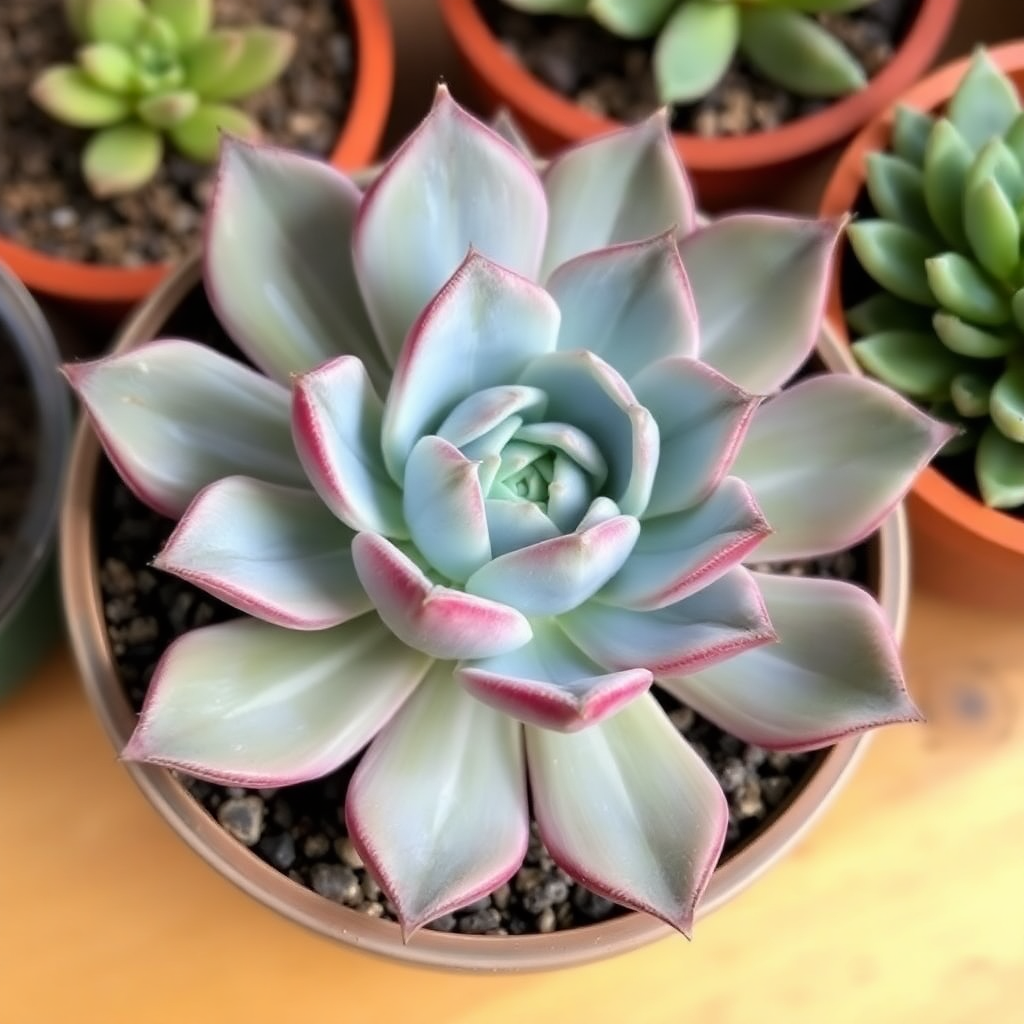
Leaf Propagation
One of the most delightful aspects of Echeveria is how easily they can be propagated. Leaf propagation involves gently removing a healthy leaf from the plant and placing it on top of a well-draining soil mix. Over time, roots will emerge, and a new rosette will form. It’s almost magical how one small leaf can become a whole new plant—nature’s version of a great comeback story!
Offsets and Pup Propagation
Another common method is propagation through offsets, also known as pups. These little plantlets grow around the base of the mature plant and can be gently separated once they’re large enough. This method not only multiplies your collection but also rejuvenates the parent plant, ensuring it remains healthy and vigorous.
Pests and Disease Management
Common Pests
Even though Echeveria is known for its hardiness, it isn’t completely immune to pests. Common culprits include mealybugs, aphids, and occasionally spider mites. These tiny invaders can sap the life out of your succulent if not dealt with promptly. A light spray of soapy water or an insecticidal soap can usually take care of the problem without harming your plant.
Disease Prevention and Treatment
Fungal infections and root rot are often the result of overwatering or poor drainage. To keep diseases at bay, ensure your plant has ample airflow and isn’t sitting in stagnant water. If you spot any signs of mold or decay, it might be necessary to trim the affected parts and allow the wound to dry before replanting. Prevention, as they say, is always better than cure!
Caring for Your Echeveria
Seasonal Care
Caring for Echeveria isn’t a one-size-fits-all affair; it changes with the seasons. In the warmer months, these plants are in active growth mode, which means they may require more frequent watering and even a bit of fertilizing to boost their energy. Come winter, they enter a state of dormancy, so watering should be significantly reduced. Adjust your care routine accordingly to mimic their natural cycle.
Fertilizing and Pruning
While Echeveria is not a heavy feeder, a diluted, balanced fertilizer can work wonders during the growing season. Pruning is another crucial aspect of care—it helps remove any dead or damaged leaves, allowing the plant to redirect its energy towards healthy growth. Think of it as giving your plant a refreshing haircut!
Design Ideas with Echeveria
Indoor and Outdoor Applications
Echeveria’s aesthetic versatility makes it a favorite for both indoor and outdoor settings. Indoors, a collection of these succulents can serve as a stunning centerpiece on your coffee table or windowsill. Outdoors, they make excellent additions to rock gardens, borders, or even xeriscaped landscapes where water conservation is key. Their compact size and striking rosettes make them a natural focal point in any design.
Container Gardening
For those who love the idea of mobility, container gardening with Echeveria is a fantastic option. Using a variety of decorative pots or even repurposed vintage containers, you can create mini succulent gardens that are perfect for patios, balconies, or even desks at work. The versatility of Echeveria in container gardens is akin to having a portable piece of art that you can rearrange at your whim.
Echeveria in Creative Decor
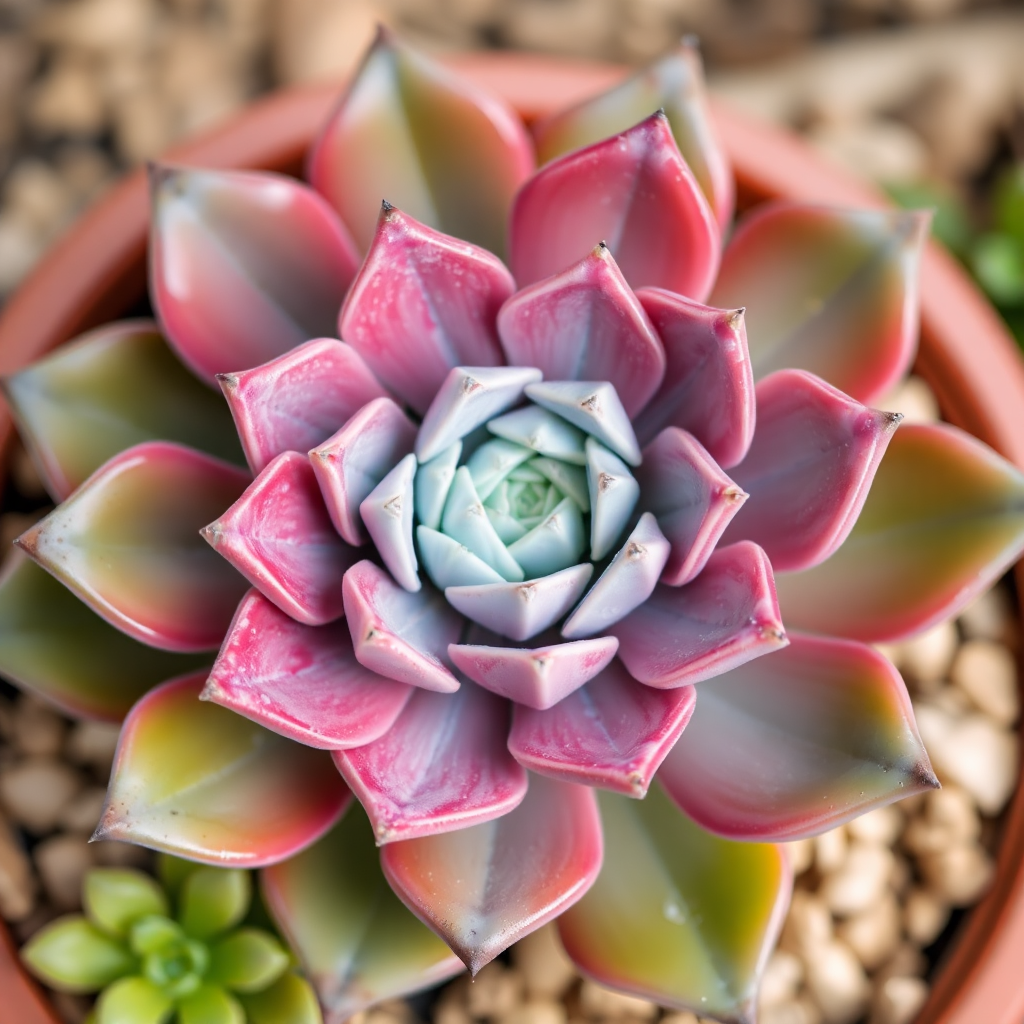
Home Decor Ideas
Imagine infusing your living space with a touch of the desert’s charm—Echeveria can make that happen. Their sculptural forms and array of colors add a modern, minimalist vibe to interiors. Place them in stylish planters, use them as accents on side tables, or create a living centerpiece. Their low maintenance nature makes them ideal for busy individuals who still want to enjoy the beauty of nature indoors.
Gift Ideas
If you’re looking for a unique and thoughtful gift, an Echeveria succulent could be just the ticket. Packaged in an attractive container with care instructions, it’s a present that symbolizes growth, resilience, and natural beauty. It’s like giving someone a little piece of nature’s artwork that they can nurture and enjoy over time.
Troubleshooting Echeveria Problems
Overwatering Issues
Overwatering is the Achilles’ heel of many succulent enthusiasts. When Echeveria gets too much water, its roots can rot, leading to a droopy, lifeless plant. The key is to ensure that your soil is well-draining and that you allow it to dry out completely between waterings. If you notice mushy, discolored leaves, it’s time to cut back on the watering schedule and consider repotting your plant into fresh, dry soil.
Underwatering Issues
On the flip side, underwatering can also pose a problem. While Echeveria is drought-tolerant, prolonged neglect can cause the leaves to shrivel and the overall plant to lose its vibrancy. The trick is to find that sweet spot—enough water to keep the plant hydrated without drowning it. It’s a balancing act that can be compared to keeping a campfire burning: you need just the right amount of fuel for a steady, glowing flame.
Echeveria Through the Seasons
Seasonal Adaptations
As the seasons change, so do the needs of your Echeveria. In the spring and summer, when the days are longer and the sun is more generous, your succulent will thrive with ample light and moderate watering. During autumn, you might notice a slight slowdown in growth as the plant prepares for winter dormancy. Adapting your care routine to these seasonal rhythms ensures that your plant remains healthy year-round.
Winter Care Tips
Winter care for Echeveria is all about minimalism. Reduce watering significantly and ensure that your plant is in a location that remains above freezing temperatures. If you live in a region prone to frost, consider moving your succulents indoors or providing a protective cover. It’s a bit like tucking in a child for a cozy nap—less is more during this quiet period.
Eco-Friendly Aspects of Echeveria
Low Water Usage
One of the standout features of Echeveria is its low water requirement. In an era where water conservation is more important than ever, these succulents offer an eco-friendly option for green enthusiasts. Their ability to store water means they require minimal watering, reducing your environmental footprint while still allowing you to enjoy a lush, vibrant display.
Environmental Benefits
Beyond their water efficiency, Echeveria succulents contribute to a healthier environment by improving indoor air quality. They absorb carbon dioxide and release oxygen, creating a mini ecosystem that benefits both you and your home. In landscaping, their drought-tolerant nature means less reliance on water-intensive lawns, making them a sustainable choice for eco-conscious gardeners.
Expert Tips for Thriving Echeveria
Want your Echeveria to be the envy of every plant lover on the block? Here are some insider tips:
- Rotate Regularly: Just like us, plants love a little variety. Rotating your Echeveria ensures even light distribution, preventing lopsided growth.
- Use a Shallow Pot: A shallow pot with excellent drainage mimics their natural rocky habitat, giving roots the space they need to breathe.
- Watch the Weather: If you live in a region with extreme temperatures, consider using a greenhouse or indoor setup during harsh conditions.
- Feed Sparingly: Over-fertilizing can be as harmful as undernourishment. A light, balanced feed during the growing season is all they need.
- Observe and Learn: Every plant is unique. Spend time observing your Echeveria, and adjust your care routine based on its response.
Conclusion
Echeveria succulents offer a remarkable blend of beauty, resilience, and ease of care that makes them a perfect addition to any plant collection. Whether you’re drawn to their captivating rosettes, their rich history, or their eco-friendly benefits, there’s no denying that these plants have a special place in the world of horticulture. By understanding their origins, ideal growing conditions, propagation methods, and common challenges, you can ensure that your Echeveria remains a thriving, living work of art in your home or garden.
Remember, the journey of caring for a succulent is much like nurturing any relationship—it requires attention, patience, and a willingness to adapt. With the tips and insights shared in this guide, you’re well on your way to mastering the art of succulent care, and in the process, adding a touch of nature’s elegance to your everyday life.
Frequently Asked Questions
Q1: How often should I water my Echeveria?
A1: Watering frequency depends on your climate and the season. Generally, allow the soil to dry completely between waterings. During the active growing season, this might be every 7-10 days, while in winter, you can reduce it significantly.
Q2: Can I grow Echeveria indoors?
A2: Absolutely! Echeveria thrives indoors as long as it receives plenty of bright, indirect sunlight. A sunny windowsill or a well-lit room can work perfectly.
Q3: What should I do if my Echeveria’s leaves start to rot?
A3: Leaf rot is often a sign of overwatering or poor drainage. Check your soil, adjust your watering schedule, and remove any rotten parts to prevent the spread of disease. Repotting in fresh, well-draining soil may also be necessary.
Q4: How can I propagate my Echeveria successfully?
A4: Propagation can be done through leaf or pup methods. For leaf propagation, gently remove a healthy leaf and place it on a dry, well-draining soil surface. For offsets, carefully separate the pups from the main plant once they are large enough and plant them individually.
Q5: Are Echeveria succulents safe for pets?
A5: While Echeveria is generally considered non-toxic, it’s always best to keep all houseplants out of reach of pets. If you suspect your pet has ingested any part of the plant, consult your veterinarian immediately.

